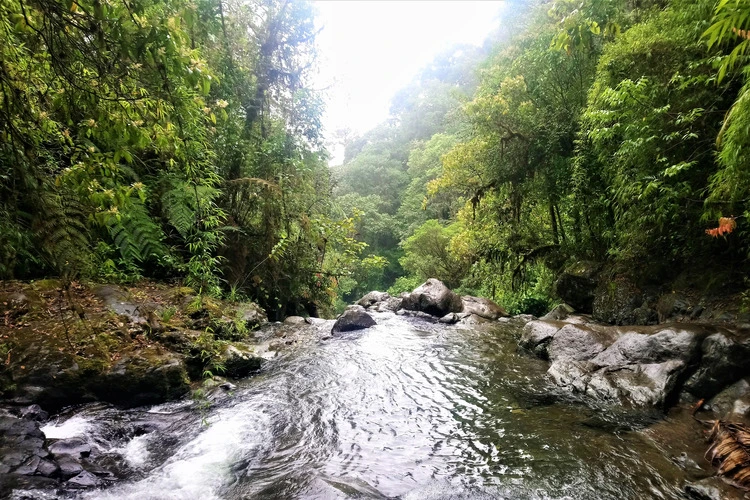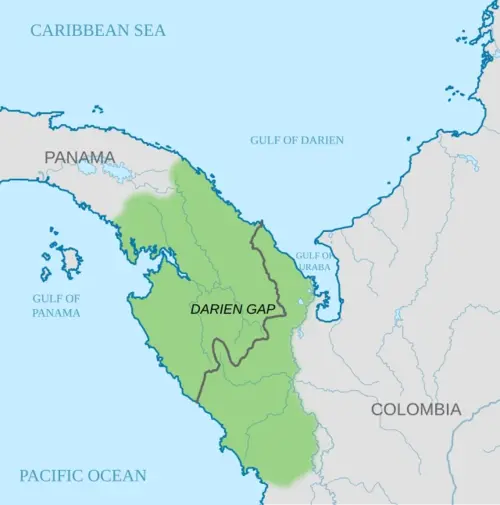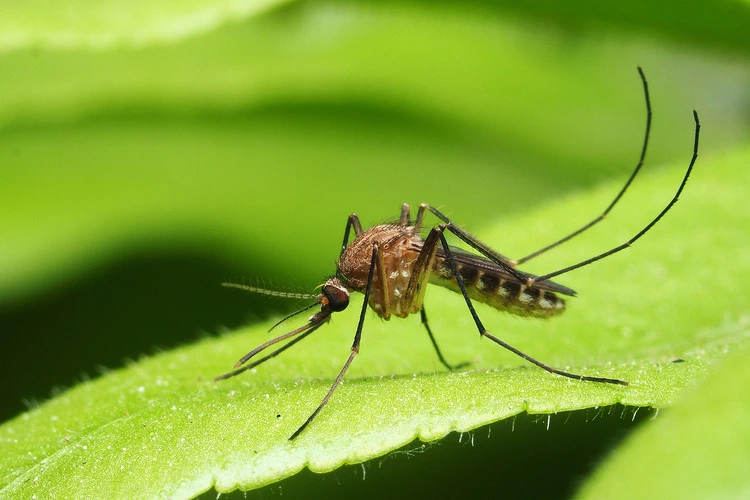
Discover more about the harrowing journey that migrants take through jungles, mountainous terrain and rapid-filled rivers in the Darien Gap
By
One of the most inhospitable and dangerous migration routes in the world, The Darien Gap stretches for more than 96 kilometres (60 miles) of rugged terrain – including swamps, rainforests and mountains – in Panama and Colombia, and is the only possible overland route between South and Central America.
It is part of a break in the Pan-American Highway, which otherwise stretches from Alaska to the very southern tip of Argentina.

First used as a migration crossing point back in the 1990s – for individuals fleeing Colombia after internal conflict and violence – its use for migrants, refugees and aslyum seekers across South America and the entire world has grown exponentially since 2010, when Panama first began to officially register migrant crossings.
Read our related articles:
Between 2010 and 2014, just 2,400 crossings were made: but as of 2023, more than 520,000 people made the journey to find both safety and work in the United States and other northern regions, a figure which has rocketed from 8,500 back in 2020.
Most individuals who undertake the journey across the Darien Gap are from Venezuela, followed by Ecuador and Haiti, and a staggering one-fifth of all those who cross are children. But others who embark upon the journey through the Darien Gap come from countries across the world, with eight per cent of migrants originating from Asia, and six per cent from African countries.
In 2023, 141 deaths were reported in the Darien Gap, a figure believed to be much higher since reporting loss of life and recovering bodies remains a difficult operation in the region. The journey itself is often so harrowing that many who successfully cross through the Darien Gap warn others about doing the same.
So what exactly makes the Darien Gap such a dangerous migration route? As we uncover, a vast network of environmental and man-made factors – from heavy rainfall to prolific extortion – combine together to make this one of the most perilous journeys one can undertake anywhere in the world.
Environmental hazards
As migrants, refugees and aslyum seekers journey through the Darien Gap – a treacherous route that can take up to 14 days to complete in the rainy season – one of the most significant hazards they face is those from the harsh terrain of the landscape, which has some of the highest mountain ridges in Panama.
The Darien Gap is also one of the wettest regions in the world, with such heavy rainfall often leading to landslides or flash flooding, as well as extremely muddy condiitons. On top of this, the journey for individuals often involves crossing multiple rivers with waters often containing rapids that can reach waist-height. It is not uncommon for strong currents to sweep people away and lead to death via drowning.

With no choice but to enter these dangerous and unclean waters, individuals also face the threat of water-borne and fungal illnesses.
Temperatures in the region often exceed 35ºC (95ºF), so combined with the lack of clean drinking water, severe dehydration is another concern to those crossing the Darien Gap. With long, arduous days of travelling largely on foot, exhaustion can quickly set in too.
Those making the crossing can only bring along the supplies which they can carry, often meaning people resort to drinking river water, leading to illnesses including diarrhoea, which only further exacerbates dehydration.
The wildlife which inhabits the Darien Gap also poses a threat to migrants, refugees and asylum seekers attempting the crossing. Venomous snakes and crocodiles live in the region’s ecosystems, along with mosquitoes, which can cause diseases such as dengue fever and malaria.
Human dangers
Despite the vast threats that the natural landscape poses, migrants report that their primary concern when crossing the Darien Gap is for their physical safety, as there are several significant threats that come from smugglers and criminal groups working along the route.
Robbery and human trafficking are common in the jungle, as well as extortion – some individuals end up paying up to eight different ‘guides’, who each demand payment of several hundred dollars per person. With no cellphone service, once migrants enter the Darien Gap, these ‘guides’ along with fellow travellers are all they have to rely on.
Rape and sexual assault is also common within the Darien Gap, so prevalent that the charity Doctors Without Borders estimate one person was sexually assaulted every 3.5 hours while crossing in December 2023. Such crimes are often committed front of migrant family members as punishment for not paying traffickers. Mass sexual violence – involving more than 100 victims at once – has also been reported in the Darien Gap.
Many cases end up unreported as those travelling in such perilous conditions are either intimidated, or must hurry to complete their journey.
Because so many illegal groups operate along the stretch of jungle, it is impossible to traverse the Darien Gap alone: to do so would be to put oneself in almost certain danger from the criminal organisations who demand payment for passage.
The few belongings and money that migrants bring on the journey – which can be sewn into clothing or hidden away – can also be seized by armed groups too. No police force in the region, along with a lack of roads, makes it virtually impossible to curb illegal activities and the exploitation of migrants who decide to undertake the journey.
What happens after exiting the Darien Gap?
For the individuals who survive the Darien Gap, the journey is far from over. At a migrant reception centre in Panama, their details are taken and they are officially registered, with humanitarian organisations providing medical care and psychological support to those arriving.
Then, individuals must remain in shelters in Panama – a process that could take up to several months – to await clearance before continuing to Costa Rica. With many migrants hopeful to reach the US, there is then another five countries to pass through and a likely reality of being deported even if they arrive at the US border. Often, migrants remain hopeful through stories heard and shared of other families and individuals being permitted to stay.
What can countries do to help?
On both sides of the border between Panama and Columbia, there are evident ways in which strategies to protect migrants, asylum seekers, and refugees could be bolstered as more individuals cross the Darien Gap each day.
In the case of the Colombian government, a clear strategy is currently not present to protect those crossing the Darien Gap. This allows those who undertake the journey to be exploited by criminal organisations as well as be vulnerable to the multitude of environmental threats at play.

To support individuals, the Colombian state could adopt a range of measures, from ensuring prosecutors investigate the roles of criminal organisations in the Darian Gap to working with humanitarian organisations to produce periodic surveys on migrants and report these findings to the Panamanian government regularly.
In Panama, the current strategy implemented by the government – a ‘controlled flow’ of migrants who have crossed the Darien Gap – has its flaws. This is a policy which restricts the movement of migrants within Panama, seeking for them to make a ‘swift’ exit to neighbouring Costa Rica instead and not prioritising their needs.
Improving Panama’s strategy too is a complex undertaking, one which includes increasing the pressure of female staff and translators in reception stations once migrants have exited the Darian Gap, improving and implementing written protocols for the care of children who have either arrived alone or been separated from their families, as well as a modification from the ‘controlled flow’ strategy which better considers migrant needs.
Other solutions include creating better migration routes across the Darian Gap itself, as well as creating other alternative migration routes so families and individuals can avoid the harrowing conditions of crossing through it.




